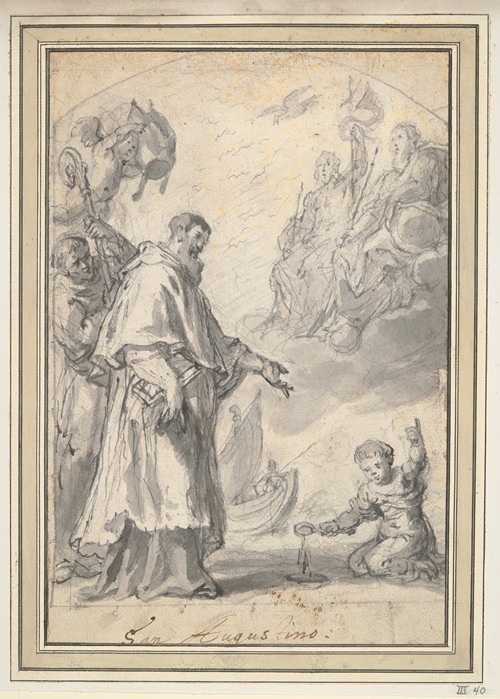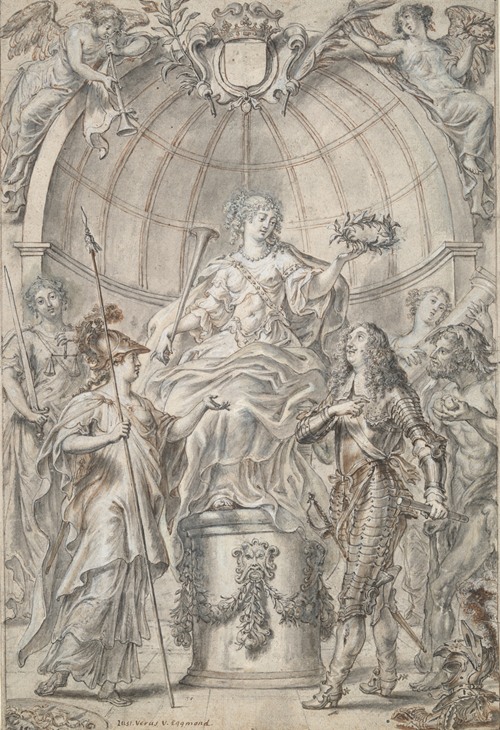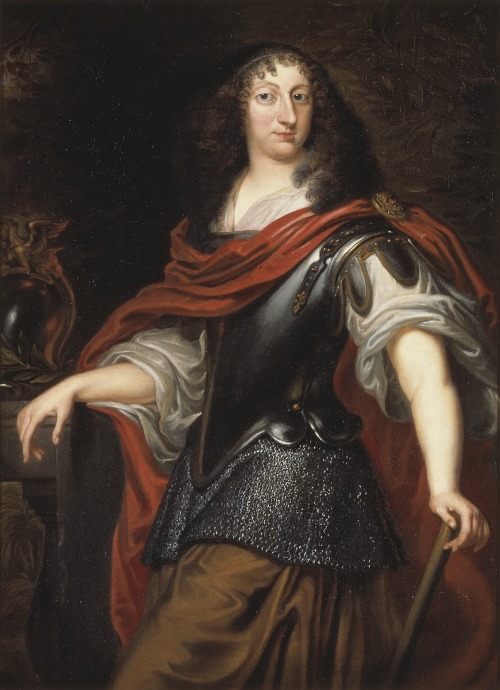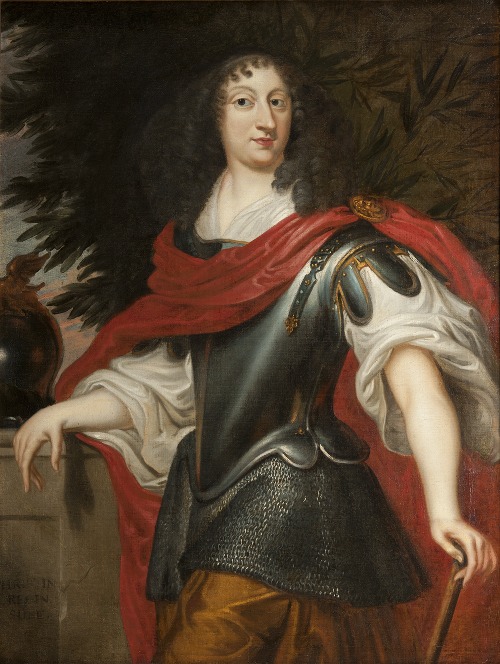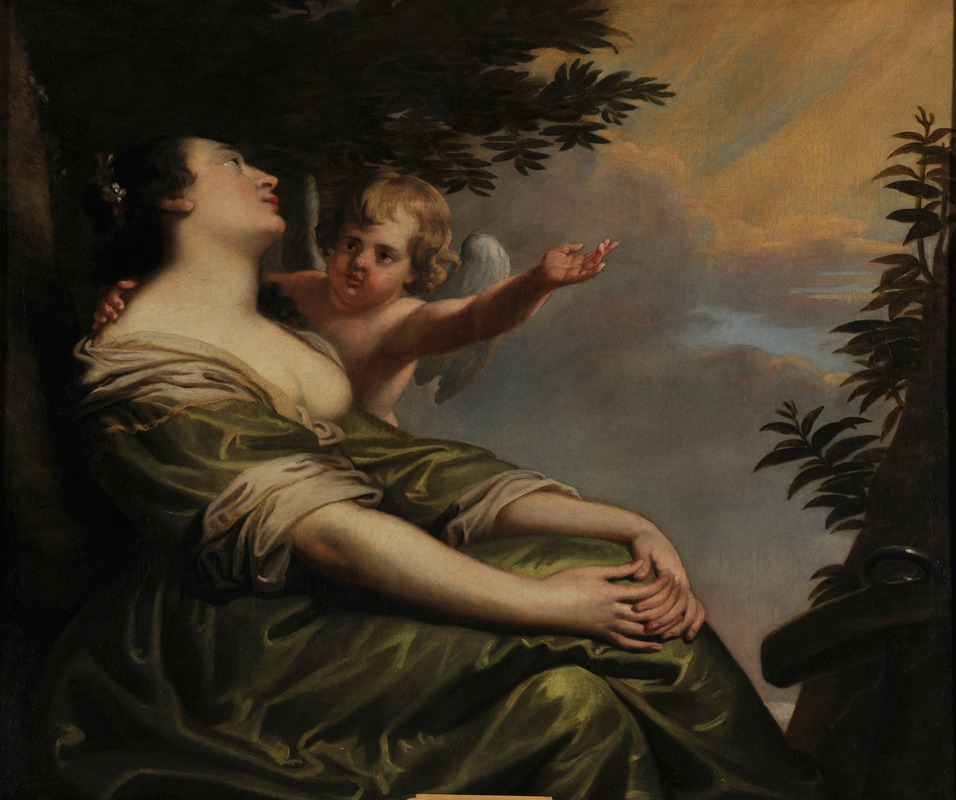
Justus van Egmont or Joost van Egmont was a painter and a tapestry designer during the 17th century. After training in Antwerp with Gaspar van den Hoecke and working with Anthony van Dyck, van Egmont also worked in Peter Paul Rubens' workshop. He moved to France in 1628 where he was a court painter for the House of Orléans. In France he helped to found the Académie de peinture et de sculpture. He later returned to Flanders where he worked in Antwerp and Brussels. He is mainly known for his portrait paintings, although he also painted some history subjects, and produced designs for five different tapestry series.
Justus van Egmont was born in Leiden as the son of Dirk Joostzone van Egmont, a carpenter, and Constantia Leenaerts. After becoming widowed his mother took her family, which included two daughters from her first marriage, back to her native Antwerp when Justus was 14 years old. In Antwerp Justus became an apprentice of the painter Gaspar van den Hoecke in 1615. Three years later, he made a will. It has traditionally been assumed that he made the will with the intention of undertaking a trip to Italy like many other artists of his day since such as trip was considered a necessary part of an artist's training. However, the absence of any evidence for such a trip to Italy and the lack of any discernible Italian influence on the style or compositions of his later work have cast some doubts as to whether he really travelled to Italy.
Not long after he made his will, van Egmont is recorded in the circle of Anthony van Dyck as is evidenced by the fact that during a court case he stated that he had worked on a series of apostles for van Dyck.
After a stay in Italy in 1618, van Egmont returned to Antwerp and worked in the workshop of Rubens from the year 1625 (but possibly already starting from 1622) to about 1628, where he was involved in the series of paintings on The Life of Maria de Medici. He became a master of the Antwerp Guild of St. Luke in 1628. While living in Antwerp, he had a relationship with Emerentia (Emerentiana) Bosschaert who bore him three sons out of wedlock: Joost (Justus), Konstantijn (Constantine) and Theodoor (Theodore) who were born between 1623 and 1627. Their relationship was later regularized and the couple would have more children including sons Bonaventura and Philippe and daughters Prudentia, Marie and Anna Catharina. Van Egmont's children trained as painters and are believed to have worked in the workshop of their father at one time or the other. However, none of them would achieve the same level of success as their father.
Some time between 1628 and 1630 van Egmont moved to Paris, where he had previously helped with matters relating to the delivery of, and payment for, Rubens' The Life of Maria de Medici cycle. It is likely that Rubens had introduced van Egmont to some influential potential patrons at the French court. The first record of van Egmont in France dates to 1633 when his son Philippe was baptized in Paris.
In Paris, van Egmont established a lifelong friendship with fellow Flemish painter Philippe de Champaigne. Van Egmont worked as a tapestry designer in the Paris workshop of Simon Vouet, one of the leading French painters of that time. Van Egmont also participated in large commissions such as the decoration of the 'Galerie des Hommes Illustres' (Gallery of Famous Men), a project at the Palais-Cardinal of Cardinal Richelieu, which de Champaigne had been contracted to undertake. Although the portraits of the famous men themselves were later destroyed, the historical scenes around the portraits painted by van Egmont have been preserved and are in the Musée des Beaux-Arts de Nantes. He is mentioned as a court painter for the House of Orléans from 1635. He was able to establish himself as a successful portrait painter for the royal family and the nobility in Paris.
He achieved commercial success in the 1640s and had a thriving business in prints for which he obtained a royal privilege. Aside from providing a steady source of income, the prints also helped to spread his reputation. In 1642 he received an important commission for the altarpiece for the Bundeskapelle in Brunnen, Switzerland.
In 1648, he was one of the founders of the French Royal Academy of Painting and Sculpture and was elected as one of the original twelve elders in charge of its running.
In January 1649 he was in Brussels where he painted a Portrait of Archduke Leopold Wilhelm of Austria, then the Governor of the Spanish Netherlands and an avid art collector. The portrait is now in the collection of the Kunsthistorisches Museum, Vienna. In 1651, van Egmont's name appeared on the alliance agreement between the Académie de peinture et de sculpture and the competing Guild of St. Luke of Paris. In 1653 van Egmont returned to Antwerp with his family. He spent time in Brussels where he designed various tapestries. He also continued to paint portraits.
The artist's success allowed him to amass a fortune which he invested into real estate in Antwerp and its surrounding areas. Starting from 1650 he signed some paintings and documents with 'Justus Verus d’Egmont'. This reflected his aspiration to be recognized as an aristocrat (just like his illustrious masters van Dyck and Rubens) based on his claim to be a descendant of the famous house of Egmont. He made several applications to get his claim to a noble title officially sanctioned but it is not clear whether or not he succeeded. When he died in 1674, his social status allowed him to be buried in Antwerp's prestigious St. James' Church where Rubens was also buried. His estate included a large collection of artworks of Flemish as well as foreign artists such as Pourbus, Rubens, Salviati, Holbein, Tintoretto, Brueghel and Vredeman de Vries.


